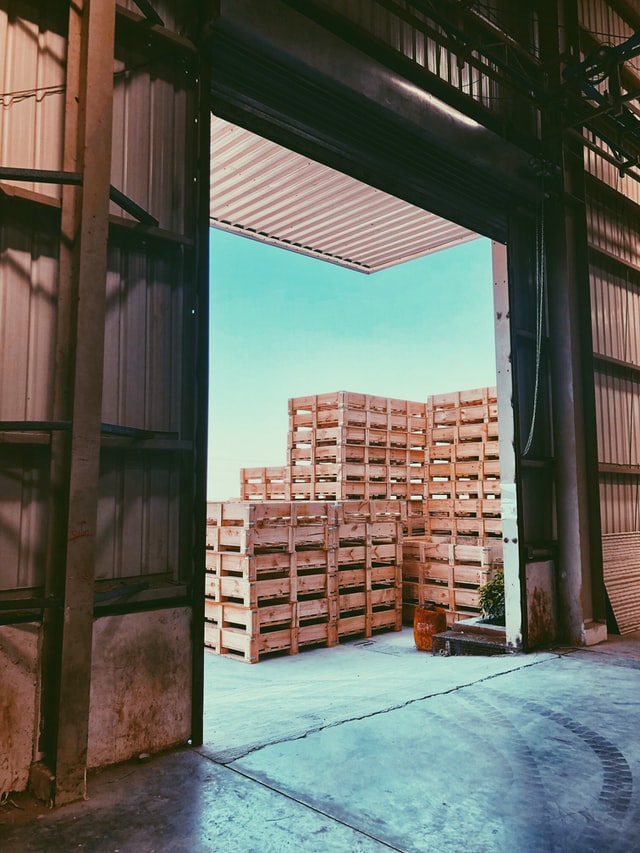
It’s coming into summer here in New Zealand. Around this time every year, the strawberry farm near our house opens for the season, selling trays of fresh strawberries and real fruit ice cream.
On a hot Sunday afternoon a few weekends ago, my partner and I were driving home from some errands. Her brother had told us that the farm was open for the season and we thought we’d stop by for ice cream.
Cars lined the streets as we approached the carpark entrance. Not a good sign. I decided to try our luck anyway, which was a mistake. We were soon stuck behind a minivan in a traffic queue with no signs of moving. We decide that my partner should jump out and queue up for ice cream; there’s no reason both of us should be stuck in the car.
After a close call with the gentleman in the minivan attempting to back his way out of the queue, I eventually escaped the chaos of the carpark and found a park on the roadside some distance away.
The queues inside for ice cream weren’t any better than the queues outside. A sea of people spilled out of the corrugated iron farm shed that served as the shop.

The system in the farm shed is as follows: first you queue up for the cashier on the left hand side of the shed. Here you can buy trays of strawberries and tickets for ice cream. They only accept cash (this is unheard of in NZ; even food trucks carry eftpos terminals). To actually get your ice cream/s, you then need to join one of five other queues to redeem to your ticket.
That’s the theory anyway. In practise, the sheer number of people and lack of any barriers made it hard to tell where one queue started and another ended. The five ice cream queues were longer than the cashier queue and effectively cut it off, requiring people to push through the ice cream queues to reach it.
The ticket system was confusing. One family in front of me had been waiting in the ice cream queue for some time before realising they first needed to get a ticket from the other queue.
The air inside was tense; a feeling of desperation to get one’s ice cream and get out was palpable. The self-satisfied expressions of people carrying stacked trays of fresh strawberries or ice creams back from the front didn’t help matters (okay, I might be projecting a bit here).
Matters definitely weren’t helped by the slow queues. The one we were standing in hadn’t moved perceptibly in fifteen minutes. The ones next to us were inching forward slowly at least. This discrepancy was caused by each queue being served by a different, dedicated ice cream machine operator, and there was clearly some diversity in operator experience.
On top of this, the spectre of COVID-19 is still lingering, New Zealand just having been through our second wave of cases. I know this because people behind us joked about it being a “covid queue” more than once, before giving up and leaving. Social distancing wasn’t possible in this unruly mass of people.
We finally got our ice creams after half an hour of waiting. There were picnic tables outside to sit at, however there was no shade to speak of. Thankfully, the late-afternoon, early-summer sun wasn’t too bad.
Once we were seated… it all made sense. You just can’t get ice cream like this anywhere else; the strawberries were so fresh. The portion size was generous to say the least. Despite everything, it was worth the wait.

As I was enjoying my ice cream, I spotted a single, overflowing rubbish bin across the courtyard. There was no bathroom or anywhere to wash your hands in sight. Clearly, there was a lot the owners could do to improve things here. My partner pointed out that a single queue shared across the five ice cream machine operators, like airport luggage check-ins, would be both faster and fairer.
And yet, none of these problems – the lack of carparks, facilities, eftpos and a sane queuing system – seemed to matter one bit. They could barely keep up with the demand. It was the same last year, and I suspect every other year. I doubt they do any marketing other than word-of-mouth. Locals see that they’re open and tell their friends and family, the same way we found out. They have a product you just can’t get anywhere else, not without a long drive at least, and certainly not from any supermarket.
More than that, I suspect their no-frills approach actually works in their favour. And by this I don’t just mean that they get to avoid bank fees by only accepting cash, although that too. Their obvious popularity despite their obvious flaws is informative. The only logical explanation is that what they offer is more than good enough to compensate.
Nassim Taleb makes the same point in his book Skin in the Game in the chapter titled “Surgeons should not look like Surgeons” (emphasis mine):
Say you had the choice between two surgeons of similar rank in the same department in some hospital. The first is highly refined in appearance; he wears silver-rimmed glasses, has a thin build, delicate hands, a measured speech, and elegant gestures. His hair is silver and well combed. He is the person you would put in a movie if you needed to impersonate a surgeon. His office prominently boasts an Ivy League diploma, both for his undergraduate and medical schools.
The second one looks like a butcher; he is overweight, with large hands, uncouth speech and an unkempt appearance. His shirt is dangling from the back. No known tailor in the East Coast of the U.S. is capable of making his shirt button at the neck. He speaks unapologetically with a strong New Yawk accent, as if he wasn’t aware of it. He even has a gold tooth showing when he opens his mouth. The absence of diploma on the wall hints at the lack of pride in his education: he perhaps went to some local college. In a movie, you would expect him to impersonate a retired bodyguard for a junior congressman, or a third-generation cook in a New Jersey cafeteria.
Now if I had to pick, I would overcome my suckerproneness and take the butcher any minute. Even more: I would seek the butcher as a third option if my choice was between two doctors who looked like doctors. Why? Simply the one who doesn’t look the part, conditional of having made a (sort of) successful career in his profession, had to have much to overcome in terms of perception.
How does any of this apply to building a startup? I think this is best summarised in an essay by Paul Graham, founder of Y Combinator. He points out that a classic mistake made by new founders is “playing house”. That is, investing too much on window dressings like a flashy website, high-production-value videos, attending conferences and trade shows, getting mugs and pens with your company logo printed on them, that kind of thing, at the expense of actually building something that people love.
I know I’ve repeatedly fallen prey to this. As a founder you feel you need at least some of this surface stuff to be taken seriously. If not by investors then at least by friends and family. But as PG points out, the best way to convince investors (the non-gullible ones at least) is to build something people want. Evidence of high user engagement or growth is very convincing.
What if you’re wanting to grow your startup organically instead? You might be able to convince users to give your product a try with a slick website and marketing materials. However, if the product is underwhelming they’re not going to stick around long or say anything good to their friends. It’s not a sustainable long-term strategy.
The strawberry farm is living proof that you can build a successful business on a great product and very little else.
If you found this article useful or interesting, drop me a comment or consider sharing it with people you know using the buttons below – Matt (@kiwiandroiddev)
Title photo by Ana Essentiels, warehouse photo by Rushabh Nishar on Unsplash
Nice article Matthew.
It would be nice if the owners had a continuous improvement mindset and would be willing to make small changes to improve the customer experience. (Going from Good to Great)